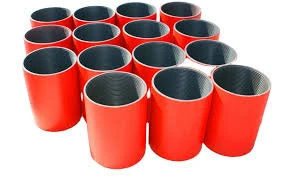- Afrikaans
- Albanian
- Amharic
- Arabic
- Armenian
- Azerbaijani
- Basque
- Belarusian
- Bengali
- Bosnian
- Bulgarian
- Catalan
- Cebuano
- Corsican
- Croatian
- Czech
- Danish
- Dutch
- English
- Esperanto
- Estonian
- Finnish
- French
- Frisian
- Galician
- Georgian
- German
- Greek
- Gujarati
- Haitian Creole
- hausa
- hawaiian
- Hebrew
- Hindi
- Miao
- Hungarian
- Icelandic
- igbo
- Indonesian
- irish
- Italian
- Japanese
- Javanese
- Kannada
- kazakh
- Khmer
- Rwandese
- Korean
- Kurdish
- Kyrgyz
- Lao
- Latin
- Latvian
- Lithuanian
- Luxembourgish
- Macedonian
- Malgashi
- Malay
- Malayalam
- Maltese
- Maori
- Marathi
- Mongolian
- Myanmar
- Nepali
- Norwegian
- Norwegian
- Occitan
- Pashto
- Persian
- Polish
- Portuguese
- Punjabi
- Romanian
- Russian
- Samoan
- Scottish Gaelic
- Serbian
- Sesotho
- Shona
- Sindhi
- Sinhala
- Slovak
- Slovenian
- Somali
- Spanish
- Sundanese
- Swahili
- Swedish
- Tagalog
- Tajik
- Tamil
- Tatar
- Telugu
- Thai
- Turkish
- Turkmen
- Ukrainian
- Urdu
- Uighur
- Uzbek
- Vietnamese
- Welsh
- Bantu
- Yiddish
- Yoruba
- Zulu
Optimizing Seating Nipple Tubing for Enhanced Performance and Reliability in Fluid Systems
Understanding Seating, Nipple, and Tubing in Oil and Gas Industry
In the oil and gas industry, the efficiency and safety of operations hinge critically on the proper installation and maintenance of various components within drilling and production systems. Among these components, seating, nipple, and tubing play pivotal roles. This article delves into these elements, outlining their functions and significance in ensuring effective hydrocarbon extraction.
What is Tubing?
Tubing refers to the pipes that are installed in a well after drilling has been completed. It serves as the conduit for oil and gas to flow from the reservoir to the surface. Tubing is usually made from steel or other durable materials to withstand high pressure and corrosive environments. Notably, tubing sizes can vary depending on the well's design and the expected production rates. The advantages of using tubing include enhanced flow assurance and the ability to isolate production zones, which can significantly improve extraction efficiencies.
The Role of Nipples
In the context of oil and gas operations, “nipples” refer to short lengths of pipe that are used to connect different components within the well system. Nipples can come in various forms, including casing nipples, which connect the casing to the tubing, and production nipples that help integrate the flow of hydrocarbons from the reservoir into the tubing. The nipples are essential for creating a seamless path for fluids, minimizing the risk of leaks and ensuring a steady and efficient flow.
A critical function of nipples is their ability to provide access points for tools and equipment. In the wellbore, intervention tools can be deployed through these nipples to perform necessary maintenance or to assess the condition of the well. Each nipple is designed for specific pressure ratings and operational conditions, ensuring that the integrity of the connection is maintained under varying environmental stresses.
Understanding Seating
seating nipple tubing

Seating refers to the interface where a nipple connects with the tubing or casing. The proper seating of nipples is essential for maintaining the integrity of the system. If a nipple is poorly seated, it can lead to leaks, pressure drops, and potentially costly failures in the production process. The seating process must involve precise measurements and ensuring that the components are properly aligned to prevent any operational issues down the line.
An effective seal at the seating area is critical to prevent any undesirable substances from entering the production system, which could lead to contamination or corrosion. Various sealing technologies are employed, such as O-rings and frangible seals, designed to withstand the extreme conditions often encountered in subsurface environments. Ensuring proper seating is thus a fundamental aspect of the installation protocol.
Interconnections in the System
The relationship between seating, nipples, and tubing is complex yet integral to successful drilling and production operations. When these components are properly installed, they create a robust system that can withstand the pressures and challenges of oil and gas extraction.
For instance, a properly seated nipple allows for smoother transitions from the reservoir through the tubing, maximizing the flow of hydrocarbons. Moreover, it reduces the chance of fluid buildup, which can lead to pressure-related issues. Conversely, inadequate seating or poorly chosen nipple configurations can compromise the entire production system’s efficacy, leading to reduced output and increased operational costs.
Conclusion
In conclusion, understanding the dynamics of seating, nipples, and tubing is essential for professionals in the oil and gas industry. These components are more than just parts of a system; they represent critical elements that ensure the safe and efficient flow of resources from underground reservoirs to the surface. With advancements in materials technology and engineering practices, the industry continues to innovate, making these systems more resilient and efficient.
As exploration and production efforts continue to expand into deeper and more challenging environments, the importance of meticulous attention to the installation and maintenance of seating, nipple, and tubing systems cannot be overstated. Ensuring that these components are up to standard is not only key to maximizing production but also vital for the safety and sustainability of operations in the ever-evolving energy sector.
-
Tubing Pup Joints: Essential Components for Oil and Gas OperationsNewsJul.10,2025
-
Pup Joints: Essential Components for Reliable Drilling OperationsNewsJul.10,2025
-
Pipe Couplings: Connecting Your World EfficientlyNewsJul.10,2025
-
Mastering Oilfield Operations with Quality Tubing and CasingNewsJul.10,2025
-
High-Quality Casing Couplings for Every NeedNewsJul.10,2025
-
Boost Your Drilling Efficiency with Premium Crossover Tools & Seating NipplesNewsJul.10,2025







